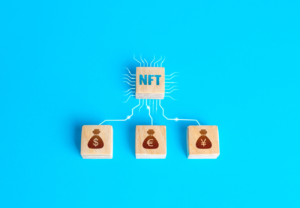Application Programming Interface (API) Key is a form of code passed in by computer programs calling an application programming interface to identify various aspects. Such as the calling program, developer, or user to the website or application. In other words, software programs can follow defined rules and specifications to communicate or ‘interface’ with each other.
Notably, APIs are a set of routines, protocols, and tools for building software applications. An API Protocol specifies how software components should interact. Remarkably, the authentication method requires a public (Consumer) key and signature seeded with a Private Key. The definitions and protocols within an API help businesses connect the many different applications.
As well as the digital media and online platforms they use in day-to-day operations save employees time and break down silos that hinder collaboration and innovation. For developers, API documentation provides the interface for communication between applications, simplifying application integration. API Keys were created as somewhat of a fixer solution.
For instance, they help to fix the early authentication issues of HTTP Basic Authentication and other such systems. This approach assigns a unique generated value to each first-time user, signifying that the user is known. While there are as many proprietary authentication methods as there are systems that utilize them, they are essentially variations of a few practical approaches.
Understand How An Application Programming Interface (API) Key Works
Application Programming Interface (API) is a set of defined rules that enable different applications to communicate with each other. It acts as an intermediary layer that processes data transfers between systems, letting companies open their application data and functionality to external third-party developers, business partners, and internal departments. Learn more about APIs below:
In layman’s language, an Application Programming Interface, or API, is an interface or communication protocol between a client and a server intended to simplify the building of client-side software. Of course, if you aren’t familiar with APIs, that may not help much. To put it more simply, an API is a set of code that allows one system to interact (or “interface”) with another.
You access it using JavaScript, which can be used to create interactive websites and apps. In this case, REST stands for Representational State Transfer, and API stands for Application Programming Interface. Sometimes, the user may make attempts to re-enter the system; they may do so using their unique key—generated from their hardware combination and IP data.
At other times, the key is randomly generated by the server which knows them—this proves that they’re the same user as before. A simple way to understand how APIs work is to look at a typical example—third-party payment processing. When purchasing on an eCommerce website, you may be prompted to “Pay with PayPal” or another third-party system—it relies on APIs to connect.
Consider the following sample workflow cases:
- When the buyer clicks the payment button, an API calls to retrieve information—a request. This request is processed from an app to the web server via the API’s Uniform Resource Locator (URL) and includes a request verb, headers, or a request body.
- After receiving a valid request from the product webpage, the API calls the external program or web server, in this case, the third-party payment system.
- On the one hand, the server responds to the API with the requested information. On the other hand, the API transfers the data to the initial requesting application, here the product website.
- Data transfer will differ depending on the web service used; the requests and responses happen through an API.
- There is no visibility on the user interface, meaning APIs exchange data within the computer or app and appear to the user as a seamless connection.
If you’ve ever added a Google Map to your WordPress website, you’ve used the Google Maps API, which allows you to Embed Google Maps for your WordPress website to interface with Google Maps. Still, a good API example is the WordPress REST API; this is an essential element—it’s an interface that developers can use to access WordPress from outside its installation platform.
Seamless Authentication:
On the other hand, this is very fast. The ability to prove identity once and move on is very agile, which is why it has been used for many years, especially as a default approach for many API providers. Additionally, setting up the system itself is quite easy, and controlling these keys once generated is even easier. This also allows systems to purge keys, thereby removing authentication after the fact and denying entry to any system attempting to use a removed key.
Authentication Demand:
The problem, however, is that API keys are often used for what they’re not. Whereas an Application Programming Interface Key is not a method of authorization, it’s a method of authentication because anyone who requests service transmits their key. Theoretically, this key can be picked up quickly as any network transmission. And if any point in the entire network is insecure, the whole network is exposed. This makes API keys a hard thing to recommend – often misused and fundamentally insecure. Nonetheless, they have their place when adequately secured and hemmed in by authorization systems.
The Notable Difference Between APIs Vs. Website Application Services
A web service is a software component that can be accessed and facilitates data transfers via a web address. Because a web service exposes an application’s data and functionality to other applications, every web service is an API. However, not every API is a web service. APIs are any software component that intermediates between two separate applications.
While web services also connect applications, they require a network. Where some APIs are open source, web services are typically private, and only approved partners may access them. As mentioned, while there are as many proprietary authentication methods as there are systems that utilize them, they are essentially variations of a few practical approaches.
These approaches were almost always developed. In particular, they can solve limitations in early communications and internet systems and, as such, typically use broad-existent architectural techniques with novel implementations to allow authentication to occur. With that in mind, a few API processes below help power up cloud computing technology.
A. HTTP Basic Authentication
One solution is that of HTTP Basic Authentication. In this approach, an HTTP user agent provides a username and password to prove their authentication. This approach does not require cookies, session IDs, login pages, and other such specialty solutions, and because it uses the HTTP header itself, there’s no need for handshakes or other complex response systems.
B. Secure Socket Layer Encryption
The problem is that unless the process is strictly enforced throughout the entire data cycle to Secure Sockets Layer (SSL) for security, the authentication is transmitted in the open on insecure lines. This lends itself to a man-in-the-middle attack, where a user can capture the login data and authenticate via a copy-cat HTTP header attached to a malicious packet.
Additionally, even if SSL is enforced, this results in a slowing of the response time. And even ignoring that HTTP is not encrypted in its base form. It is encapsulated in base64 and is often erroneously proclaimed as encrypted due to this. HTTP Basic Authentication does have its place, for instance, in an internal network, especially in Internet of Things (IoT) situations.
This is where speed is of no essence; having an HTTP Basic Authentication system is acceptable, mainly as a balance between the cost of implementation and actual function. However, as a general authentication solution, HTTP Basic Authentication should seldom be used in its base form.
C. OAuth Authentication
Generally speaking, OAuth is a bit of a strange beast. Not only is OAuth an authentication method, but it is also a method of both authentication and authorization. When OAuth is used solely for authentication, it is what is referred to as “pseudo-authentication.” In this approach, the user logs into a system. That system will then request authentication, usually as a token.
The user will then forward this request to an authentication server, which will either reject or allow this authentication. From here, the token is provided to the user and then to the requester. Such a token can then be checked at any time independently of the user by the requester for validation and can be used over time with a strictly limited scope and age of validity.
D. System Validation
This is a much more secure and robust system than the other approaches. Primarily because it allows for the soft establishment of scope, that is, what the system’s key allows the user to authenticate to and validity. The system doesn’t have to revoke the key purposely; it will automatically become deprecated in time.
As with anything, this approach has some significant pros and cons. On the one hand, it’s superior regarding the level of security it can offer. For this reason, OAuth is quickly becoming the de facto choice for anyone choosing to eschew API keys. Be that as it may, you can learn how to Store Your API Keys More Securely Using CMake & Kotlin for more helpful guides.
On the other hand, using OAuth for authentication alone ignores everything that OAuth has to offer – it would be like driving a Ferrari as an everyday driver and never exceeding the residential speed limits. With those caveats in mind, OAuth is easy to set up.
The Most Common Application Programming Interface (API) Key Uses
By all means, API keys grant full access to your Host Account Dashboard. And should be protected the same way you would protect your password. However, there are a few common scenarios to remember when working with API keys.
Such as follows;
- Give each integration its API key, and label each key so you know which one goes with which application. If a specific API key is compromised, you can disable that key without disabling access to all your other integrations.
- Be careful not to expose the key to the public (such as in screenshots, videos, or help documentation). Remember that blurring your data isn’t always enough. Using “cut” functions in your graphics program is best to obliterate the data.
- If an API key needs to be shared, generate a new one and label it accordingly to be disabled if needed. Never email the API key because it would allow access to your premium email account, such as MailChimp. Especially if hackers were to compromise your email account.
- For example, if you revoke the user access to your MailChimp account, any API keys created by the user will be removed from your account.
- Access to each endpoint is determined by the role of the user who generated the API key. To learn more about user-level permissions, visit Manage User Levels in Your Account to get more helpful tips.
On that note, you can look at the 3 Common Methods of API Authentication Explained in detail by NordiCapis. Equally important, you can also learn more about credentials, access, security, and identity for more helpful information.
Who Is The API Keys Auth Provider?
The Application Programming Interface Key Auth Provider or API Key Auth Provider offers an alternative method for allowing external 3rd Parties access to your protected Services. In that case, without needing to specify a password. API Keys are the preferred approach for many well-known public API providers and are mainly used in system-to-system scenarios for many reasons.
Including;
- Simplicity – It integrates easily with existing HTTP Auth functionality
- Independent from Password – Limits exposure to the much more sensitive master user passwords that should ideally never be stored in plain text. Resetting User’s Password or password reset strategies won’t invalidate existing systems configured to use API Keys
- Entropy – API Keys are typically much more secure than most normal User Passwords. The configurable default has an entropy of 24 bytes (Guides have 16 bytes). And also generated from a secure random number generator that encodes to 32 chars using URL-safe Base64 (Same as Stripe)
- Performance – Thanks to their much greater entropy and independence from user-chosen passwords, API Keys are validated as fast as possible using a datastore Index. This is a contrast to validating hashed user passwords. Which as a goal requires the usage of slower and more computationally expensive algorithms to try to make brute-force attacks infeasible
Like most ServiceStack Providers, the new API Key Auth Provider is simple. Integrates seamlessly with Service Stack existing Auth model and includes Typed end-to-end client/server support.
The Difference Between API Keys Authentication Vs. Authorization
So, the easiest way to divide authorization and authentication is to ask what they prove. In simple terms, Authentication is when an entity proves an identity. Authentication proves that you are who you say you are. This is akin to having an identification card–an item given by a trusted authority that the requester, like a police officer, can use as evidence that supports who you are.
Authorization is an entirely different concept, though it is undoubtedly closely related. In simple terms, Authorization is when an entity proves a right to access. Authorization proves you have the right to make a request. When you try to go backstage at a concert or an event, you don’t necessarily have to prove that you are who you say you are –you furnish the ticket.
This proves you have the right to be where you’re trying to get into. Consider for a moment a driver’s license. In many countries, a driver’s license proves you are who you say you are via a picture or other certified element and demonstrates that you have a right to drive the vehicle class you’re interested in. In such a case, we have authentication and authorization.
And in many API solutions, we have systems that give a piece of code. Something that both authenticates the user and proves their authorization. In such a case, we have hybrid solutions among related cloud services. Therefore, moving forward, it’s important to remember that we’re discussing a system proving your identity. Of course, nothing more, nothing less.
The Topmost Application Programming Interface (API) Key Types
First, you can look at Carto’s article: The main types of API Keys to gather more helpful information. Secondly, it’s essential to realize that inside the CARTO Platform, you can find three types of API Keys.
Including:
- Regular
- Default public
- Master
1. Regular APIs
Notably, Regular API Keys are the most common type of API Keys. They provide access to APIs and database tables (aka Datasets) in a granular and flexible manner.
For example, one API key can provide access to;
- SQL API.
- A World_Population dataset with special permission.
- Most Liked_Cities dataset with select or insert permissions.
With this API Key, you can access the SQL API but not the Maps API. You also can run a SELECT SQLquery to the dataset of theWorld_Population. But not an,UPDATEDELETE or evenINSERT Nevertheless, you can run an toINSERT the list of the Liked_Citiesdataset. Access to the dataset isNational_Incomesdenied.
Creating as many regular API Keys as you want is also possible. Moreover, we encourage you to create as many standard API Keys as apps/maps you produce to enforce security. On the one hand, an important property to remember about regular API Keys is that they are not editable. You can not add/delete datasets nor APIs.
On the other hand, another essential property of Regular API keys is that they inherit all the Datasets permissions from the Default Public Application Programming Interface Key.
2. Default Public APIs
Surprisingly, the Default Public is a kind of regular API Keys. They provide access to APIs and Datasets but for the latter in a read-only way. Every user has one and only one Default Public API Key. That means that on user creation, a Default Application Programming Interface Key is issued for that user, and these types of keys are not revocable/deletable. For example, one Default Public API Key can provide access to;
- SQL API
- Maps API
- a World_Population dataset with reading permission
- the Liked_Cities dataset with reading permission
A cosmetic difference compared to the other API Key types is the code/token that identifies these API Keys. At the same time, it’s just the default_public. Not to mention, it’s a simple human-readable constant string with no randoms involved.
3. Master APIs
In general, Master keys are an exceptional kind of API Keys. As it happens with the Default Public type, every user has one and only one Master non-revocable API Key. The unique thing about Master API Keys is that they grant access to almost everything. Such as the APIs and Datasets (select/insert/create/delete). Your Master API key carries many privileges, so keep it secret.
Please do not share it in publicly accessible areas such as GitHub or client-side code. It would be best if you used Master API Keys sparingly. Limit its direct use only to interact programmatically with the Auth API. Issue and use regular API Keys for the rest of the use cases. On that note, how and when are API Keys applied in cloud computing? Let’s learn a few applications below.
API keys are for projects; authentication is for users
Google Cloud Endpoints handles both API keys and authentication schemes (such as Firebase or Auth0). The main distinction between these two is:
- API keys identify the calling project — the app or site — making the call to an API
- Auth tokens identify a user — the person — that is using the app or site
API keys provide project authorization
To decide which scheme is most appropriate, it is essential to understand what API keys and authentication can provide.
- Identification — Identify the app or the project that’s making a call to this API
- Authorization — Check whether the calling app has been granted access to call the API and has enabled the API in their project
API keys are not as secure as auth tokens (see Security of API Keys), but they identify the app or project that’s calling an API. Moreover, by identifying the calling project, API keys enable usage information to be associated with that project. And also allow the Extensible Service Proxy (ESP) to reject calls from projects that haven’t been granted access or enabled the API.
Authentication of Users
By contrast, authentication schemes typically serve two purposes. Such as;
- Authentication — Securely verify that the calling user is who they claim to be
- Authorization — Check whether the user should have access to make this request
Authentication schemes provide a secure way of identifying the calling user. Cloud Endpoints also checks the auth token to verify it has permission to call an API. Based on that authentication, the API server will decide on authorizing a request. If you need the ability to identify the user making the call, see Authenticating Users.
While API keys identify the calling project, they do not recognize the user. For instance, if you have created an app that calls an API, an API key would identify the app that is making the call but not the identity of the person who is using the app. If you need a more secure way to limit which projects or services can call your API, see Authentication Between Services.
Google Application Programming Interface (API) Key
Important to realize that Google offers dozens of API Keys for web designers and developers. Some are related explicitly to popular Google products, like Gmail and Analytics. In contrast, others are more specialized and aren’t part of public programs. Of course, all are free to use. You can view all the Google API Keys and code tools on their Site Directory. Below are Google’s most used APIs.
General API Keys
- Feed API – The Google Feed API lets you download any public feed (including RSS, Media RSS, and Atom) and combine them into mashups. It simplifies the mashup process using JavaScript rather than more complex server-side coding.
- Places API – Google Places is a large directory of local businesses and attractions all around the world. The Places API lets you access that information, display it on your website, and display user check-ins.
- Geocoding API – The Geocoding API lets you convert any address into geographic coordinates, which can then be used to place markers on a map.
- Tasks API – The Tasks API offers endpoints for reading, searching, and updating Google Tasks content and metadata.
- Analytics Management API – The Analytics Management API gives improved access to your Analytics data and lets you fine-tune your requests to pull the information and reports you need for your application.
- Directions API – The Directions API lets your users get directions from one point to another using a variety of travel modes from within your site or app and doesn’t require a Google Maps API Key.
Content API Keys
- Blogger Data API – The Blogger Data API lets your application create and post new blog posts, edit or delete existing posts, and search for posts based on specific criteria.
- Books API – The Google Books API lets you integrate book searches into your application and embed book previews on your site.
- Calendar API – The Calendar API gives access to many of your web app’s standard web interface tools and operations.
- Moderator API – Google Moderator is a tool for collecting ideas, questions, and recommendations from any size audience. The API allows your website or application to do the same.
- Prediction API – The Prediction API helps you make more innovative apps to analyze historical data and predict future outcomes.
- Google Web Fonts API – The Web Fonts API makes adding free web fonts to your website or application easy. Their collection of fonts grows continuously and already includes a wide variety.
Integration API Keys
- Picasa Web Albums Data API – The PWA Data API can create albums and upload, retrieve, or comment on photos, among other features.
- Static Maps API – You don’t always want an interactive map on your site. Sometimes a static map is just what you need. The Static Map API lets you embed static Google Maps onto your website, including custom-styled maps.
- YouTube APIs – YouTube has two APIs available: Player APIs and Data APIs. The Player APIs allow you to have an embedded or chromeless player. In particular, that which you can then customize within HTML or Flash. The Data API lets your app perform many of the operations available on YouTube, such as uploading videos and modifying user playlists.
- Webmaster Tools API – The Webmaster Tools API lets your client application use various Webmaster Tools functions, including viewing sites, adding and removing websites, verifying site ownership, and submitting and deleting Sitemaps.
- OpenSocial – OpenSocial can be used to build social applications, create social app platforms, and share and access social data.
You can learn more about Google API Keys: Why and When to Use the Keys to gather more helpful information.
IBM Cloud Application Programming Interface (API) Key
IBM® Cloud API keys are created from the User details page in the IBM Cloud console. For a user and are associated with the user’s identity. Only the user with which the API key is associated can create and delete it. You can use the IBM Cloud API keys in the command-line interface (CLI).
Or as part of automation to log in as your user identity. For more information about using an API key associated with your identity, see Managing user API keys to gather more helpful information. You can also use IBM Cloud API keys to access classic infrastructure APIs. Especially those that are associated with the service IDs that you created.
Service IDs connect an application inside or outside IBM Cloud to an IBM Cloud service. For more information about creating API keys associated with a service ID, see Managing service ID API keys for more helpful information.
Yahoo Application Programming Interface (API) Key
Important to realize, like Google, Yahoo! offers several APIs useful for developers. All are free to use and can help you integrate a variety of Yahoo!-owned web services into your app, including Flickr and Delicious. Here are more examples;
The Answers API lets you access the collective knowledge contained within Yahoo! Answers. You can search for Answers based on various criteria, including the specific user, category, and more. Set your app to watch for new questions in the categories you choose. And also track new answers from particular users.
The Contacts API lets you access relationships in your Yahoo! address book. It reads a user’s Contact information while respecting user privacy and permission settings.
The Delicious API gives read/write access to Delicious bookmarks and tags.
The Fire Eagle API helps you create location-aware websites and applications.
With the Flickr API, you can view, search, and manipulate photo tags, display photos from a specific user or group, and more.
The Local API lets you access location-based information and user-contributed content.
Yahoo! offers several APIs for their Maps services, such as Ajax API, a REST API, and a No Coding API.
The Meme is a multimedia light-blogging platform. The API lets you create apps to read, post, and repost content through Meme.
The PlaceFinder API, similar to Google’s GeoCoding API, lets you convert a street address into geographic coordinates.
The Other Alternative Additional API Keys You Should Know About
For your information, microservices is an architectural style that divides an application into smaller, independent components (also called microservices), connected using REST APIs. Building an application as a collection of separate services enables developers to work on one element independently and makes applications easier to test, maintain, and scale.
Microservices architecture has become more prevalent with the rise of cloud computing and, together with containers and Kubernetes, is foundational to cloud-native application development. Yahoo! and Google aren’t the only ones offering powerful APIs for designers and developers. Several social media sites and others have their API(s), including Twitter, Facebook, Yelp, Bit.ly, etc.
MailChimp API Keys
If you want to set up an integration with your MailChimp account, chances are high that you’ll need to generate an API key. Users with Manager permissions can create and view their API keys. Users with Admin permissions can also see API keys for other account users.
Twitter API
Twitter has a host of developer tools surrounding their API that let you create apps that interact with virtually any of Twitter’s functions.
Facebook APIs
Facebook offers APIs for working with Credits, Ads, Chat, and more. Also found here is the Graph API, the backbone of the Facebook Platform. And enables your app to read and write data to Facebook.
Awe Some API
The Awe Some platform offers several developer APIs for integrating their social media campaign tracking tools into your app or website.
Foursquare APIv2
The Foursquare APIs not only allow you to create apps that interact with the Foursquare service. But also to use Foursquare’s place-related database as a standalone service.
Ning API
Ning offers a set of APIs for developing desktop and mobile apps, custom network features, profile apps, and data importers.
Soundcloud API
Soundcloud APIs include tools for sharing, streaming, and customizing the Soundcloud player for your website.
Social Mention API
The Social Mention API provides real-time search data from several social media services. In general, for integration into other applications. It’s free for personal and non-commercial use.
Opus Social Media API
The Opus Social Media API can be a basis for developing a social networking and digital media site or app.
Digg API
Digg offers an API that lets you access their newsfeeds for your sites and applications.
Yelp Fusion API
The Yelp API lets you access business listing info, ratings, and review excerpts from Yelp in your application or website. Conversely, the Yelp Fusion API lets you get the best local content and user reviews from millions of businesses worldwide.
Zillow Neighborhood Information APIs
Real estate site Zillow offers APIs that give access to neighborhood information that can be integrated into other applications. (They also provide several other APIs, including postings, property details, home valuations, etc.)
Tropo API
Tropo is an application platform that enables web developers to write communication applications in the languages they already use. The Tropo API adds Twitter, IM, voice, and SMS functionality to various common programming languages. Development is free, though sending messages varies in price (with Twitter and IM messages currently free).
The Bitly API
Bitly offers an API for integrating URL shortening into your application or website. Using the Bitly API, you will exercise the full power of your links through automated link customization, mobile deep linking, and click analytics.
How Application Programming Interface (API) Key Powers Cloud Security
“A good defense is the best offense.” Someone once said that. That’s partly true in Android regarding storing API keys and protecting them against hackers. It would be best to keep your API keys private and secure for multiple reasons. If a hacker gains access to your Application Programming Interface (API) Key, things could get ugly quickly for the target business or organization.
They could make API calls, which could tremendously increase your billing costs, or use it to disrupt users’ data. API keys are generally not secure since they are typically accessible to clients. Thus, this makes it easy for someone to steal an API key. While under the restrictions, you can set an API Key to mitigate this. Hence, there are better approaches for authorization.
For example, see Authenticating Users for more helpful guidelines. In other words, your API and Secret Key are confidential to you and the host. Meaning it is vital to keep both keys confidential to protect your account. To create additional API Keys, go to your API Key Management page on the Host account, such as Google, Shopify, Themeforest, Carto, etc.
APIs simplify the design and development of new applications and services. They also help to integrate and manage existing ones. But they offer other significant benefits to developers and organizations at large.
1. Improved Collaboration
The average enterprise uses almost 1,200 cloud applications (link resides outside IBM.com), many of which are disconnected. APIs enable integration so that these platforms and apps can seamlessly communicate. Through this integration, companies can automate workflows and improve workplace collaboration. Without APIs, many enterprises would lack connectivity, causing information silos that compromise productivity and performance.
2. Accelerated Innovation
APIs offer flexibility, allowing companies to connect with new business partners, provide new services to their existing market, and, ultimately, access new markets that can generate massive returns and drive digital transformation. For example, Stripe began as an API with just seven lines of code. The company has since partnered with many of the most prominent enterprises in the world, diversified to offer loans and corporate cards, and was recently valued at USD 36 billion (link resides outside ibm.com).
3. Data Monetization
Many companies offer APIs for free, at least initially, to build an audience of developers around their brand and forge relationships with potential business partners. If the API grants access to valuable digital assets, the business monetizes it by selling access. This is referred to as the API economy. When AccuWeather (link resides outside ibm.com) launched its self-service developer portal to sell a wide range of API packages, it took just ten months to attract 24,000 developers, sell 11,000 API keys, and build a thriving community.
4. System Security
APIs separate the requesting application from the infrastructure of the responding service and offer layers of security between the two as they communicate. For example, API calls typically require authentication credentials; HTTP headers, cookies, or query strings can provide additional protection during data exchange, and an API gateway can control access to minimize security threats further.
5. User Privacy
Just as APIs provide added protection within a network, they can also provide another layer of protection for personal users. When a website requests a user’s location—delivered via a location API key, the user can decide whether to allow or deny this request. Many web browsers and mobile operating systems, like iOS, have permission structures built in when APIs request access to applications and their data. When the app must access files through an API, file systems such as Windows, Mac, and Linux use permissions for that access.
Summing Up,
As you can see, an API may restrict some or all of its methods to require API keys. It makes sense to do this if you want to block anonymous traffic. At the same time, API keys identify an app’s traffic for the API producer. And in case the app developer needs to work with the API producer. Especially to debug an issue or show their app’s usage.
You can also control the number of calls made to your API. And if you need to identify usage patterns in your API’s traffic, you can see app usage in APIs & Services. Request the ability to filter logs by API key. With that in mind, you can look at 40 Useful APIs for Web Designers and Developers to gather more helpful information.
It’s important to realize that API keys are less secure than auth tokens (see Security of API Keys). But they identify the app or project that’s calling an API. Application Programming Interface (API0 Key is essential to website designers and users. To learn more about how to set up and use API key access, see Restricting Access with API Keys for more helpful information.
Also, what about identifying individual users? API keys don’t identify users; they identify projects. Still, secure authorization is not always guaranteed. At the same time, recognizing the creators of a project can be tedious Note also that Service Infrastructure does not provide a method to look up projects from API Keys directly.
Other More Related Resource References:
- Cloud Computing | How It Works, Example Types & Use Benefits
- How Artificial Intelligence Complete Help In Cloud Computing
- Multi-Factor Authentication (MFA) In AWS For Cloud Security
- What Are eCommerce APIs? The Main Models, Types Plus Benefits
- How API Management Platforms Helps In Enterprise Integration
- How Shipping APIs In eCommerce Functions And Benefit Sellers
Finally, we hope the above-revised guide was helpful to you. But if you need more support, you can always Consult Us to get more help. In our comments section, you can also share your additional thoughts, opinions, suggestions, recommendations, contributions, and questions for FAQs & Answers from our team. Until the next one, thanks for visiting; you are welcome!









